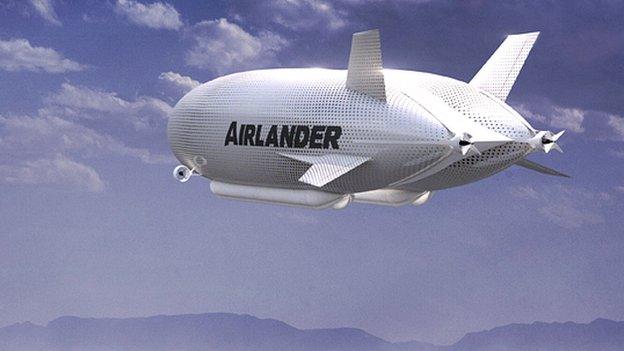Haunting images of the UK's redundant RAF bases
- Published
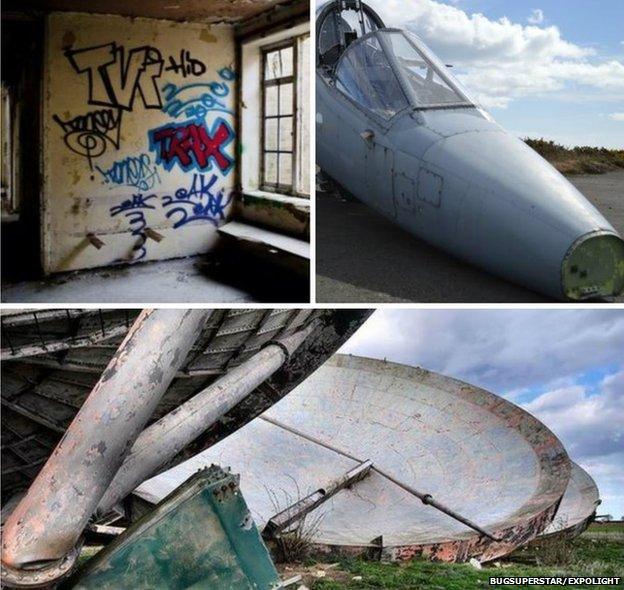
Thirty-eight RAF bases in the UK have closed in the past 20 years as part the Ministry of Defence's "constant review of defence needs". But what happened to them after the military left?

RAF Upwood, Cambridgeshire
Jack Watson, 91, served as a flight engineer on Lancaster bombers and flew more than 70 times from Upwood on missions over Germany.
On one mission to Nuremberg the squadron lost four of its 20 planes.
"The first time we went on a daylight raid the sky was full of shell bursts," he said.
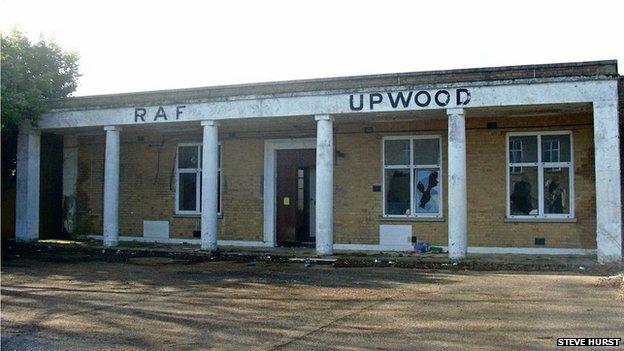
RAF Upwood was once a key base for World War Two bomber squadrons
"We were lucky we got away with it.
"We came back numerous times with holes in the plane from flak but none of the crew ever got a scratch."
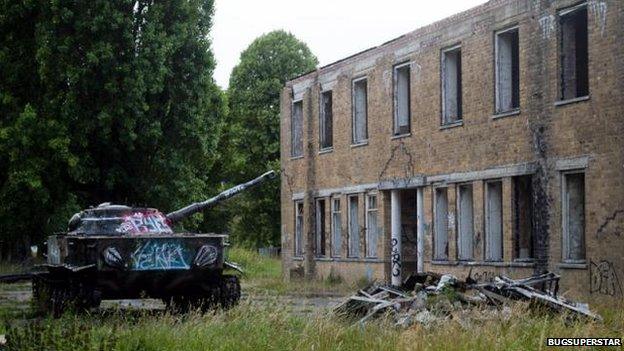
Derelict buildings which once housed RAF personnel are now used for paintball games
Upwood was teeming with about 2,500 crewmen and other staff during World War Two and was one of more than 70 bases in the east of England given over to the bombing campaign.
Michael Wadsworth, whose father Philip died on a mission over Stuttgart, said: "People lined the roads around Upwood when the bombers took off, not knowing whether or not that was the last time on God's earth they would see them again.
"And Upwood was shot through with sadness when crews failed to return.
"They were heroes, there is no other word for it."
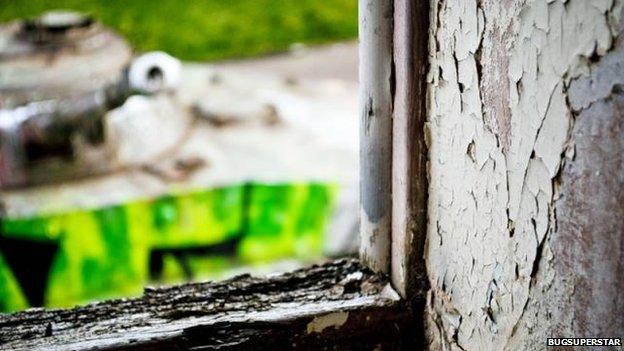
The dilapidated buildings are earmarked to be flattened for a housing development
RAF Upwood was the base for squadrons of Mosquitoes of 139 Squadron, external and Lancasters of 156 Squadron, external which joined from early in 1944.
156 Squadron lost, external more than 170 crewmen and 139 Squadron lost nearly 40 crewmen while based at Upwood during the war.
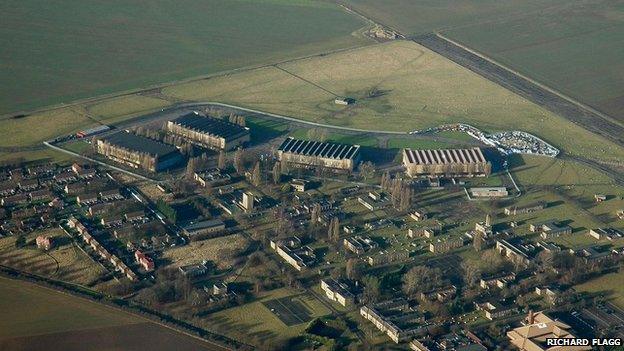
Upwood's four hangars are still used by engineering firms
Upwood was later transferred to the US Air Force in Europe and after it pulled out, was closed by the Ministry of Defence in 1995.
It is now home to a gliding, external club and the derelict buildings which paintballers use in mock battles are earmarked for housing.

RAF Stenigot, Lincolnshire
"It's living history. When you stand at the top of the radar mast you can see the craters where the Luftwaffe tried to knock it out."
Sgt Dean Davies of the RAF's Aerial Erector School, external, tells students about RAF Stenigot's role in the Battle of Britain.

As communications technology was developed in the 1980s the microwave dishes became redundant
RAF Stenigot, near Louth, was built as part of Britain's Chain Home Radar warning systems during World War Two.
Now the 20m-wide long-distance microwave dishes lie abandoned after the systems became redundant in the 1980s.
The cost of removing the dishes proved too much, which is why they still lie in the field.
Most of the site has been demolished apart from the Grade II-listed radar tower which is used by the Erector School for selecting recruits.
"The 360ft high mast is ideal training because we can test students' physical stamina and ability to work at height," said Sgt Davies.

The cost of removing the dishes though proved too much, which is why they still lie in the field

RAF Cardington, Bedfordshire
"The buildings are amazing and every day you are blown away by their size and scale and their engineering," says Chris Daniels of Hybrid Air Vehicles (HAV), the current occupiers of RAF Cardington.
The site is home to two giant sheds, built for airships in the 1920s, which are now Grade II-listed buildings.
One shed housed the R101 airship that crashed at Beauvais in France in 1930 on its maiden flight to India.

Shed 1 and Shed 2 at Cardington are protected by listed status because of their history
The R101 was the world's largest flying craft at 731ft (223m) long and had been intended to service routes within the British Empire.
Forty-eight of the 56 crew and passengers died in the crash which ended Britain's work on large airships for many years.
But airship manufacturing has returned to Cardington with HAV, which is building a new generation of airships there. Last year at Cardington it unveiled what is currently the world's longest aircraft, a 302ft (92m) airship.
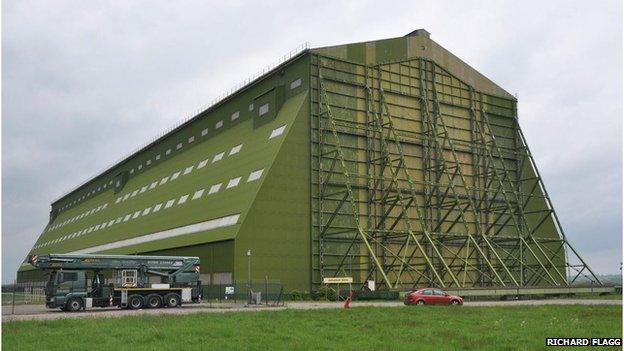
The restored Shed 2 at Cardington is used as a film studios and rehearsal space
HAV's Airlander, which was designed and built at Cardington, is full of inert helium and not explosive hydrogen like the R101.
Iron Maiden singer and qualified pilot Bruce Dickinson put £250,000 into the project, which attracted about £6m in government grants.
HAV aims to build "hundreds" of the airships, which it says are ideal for carrying large loads into disaster zones without airports.

Shed 1, pictured during restoration, is where the R101 airship was built in the 1920s
"The legacy of those old airships is the stunningly huge and impressive space," said Mr Daniels.
"So it's great to understand the historical context, but for us it is historical."
The site is also expected to see the building of about 600 new homes, which were granted permission last year.
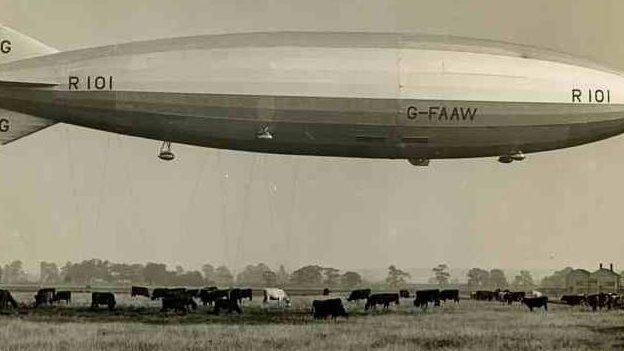
The ill-fated R101 airship while tethered, readying for flying at Cardington

RAF Predannack, Cornwall
"Like a breath of wind gone in a fleeting second, only the memories now remain," says a plaque commemorating those who served at RAF Predannack.
Those memories are brought to life to a certain extent by the appearance of RAF aircraft such as the Harrier, used for training by rescue crews at nearby RNAS Culdrose.

A Harrier jet at Predannack airfield where the old planes have been used for training air rescue crews
Barnes Wallis, who invented the "bouncing bomb" for the Dambusters Raid in 1943, secretly tested rocket-powered swept-wing aircraft at RAF Predannack using a launching track built across the airfield.
Its location on the Cornish coastline meant it was a good stepping-off point for attacks on German shipping around the Bay of Biscay during World War Two.
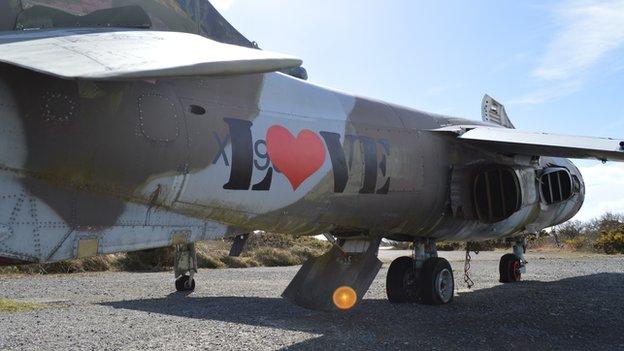
A number of disused jets remain at Predannack
But the successes of its crews in Spitfires, Hurricanes, Beaufighters, Mosquitoes and Typhoons led to attacks by the Luftwaffe.
Predannack's coastal position also made it a natural place for emergency landings, and the runways were extended in 1943 for larger aircraft such as Wellington and Liberator bombers.
At its peak there were about 3,600 crew and support staff station at Predannack.
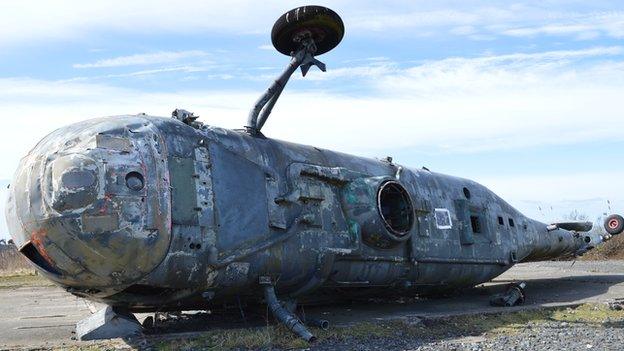
Some aircraft have been cannibalised for parts at the satellite station of RNAS Culdrose
The airfield is now a training base for helicopters crews from RNAS Culdrose and is home to a a gliding school.
Ross Goldsworthy of 626 (Predannack) Volunteer Gliding Squadron said: "On Armistice Day we have a parade and I give a talk about the airfield's history.
"It's important to remember its role in the past and, if we have a non-flying day, we show the air cadets around."
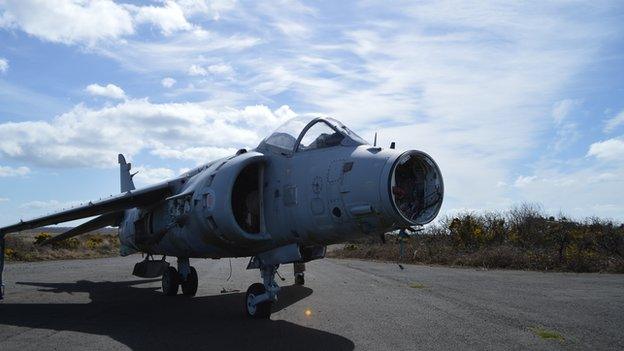
Another Harrier is among the relics of the past at Predannack

- Published14 April 2015
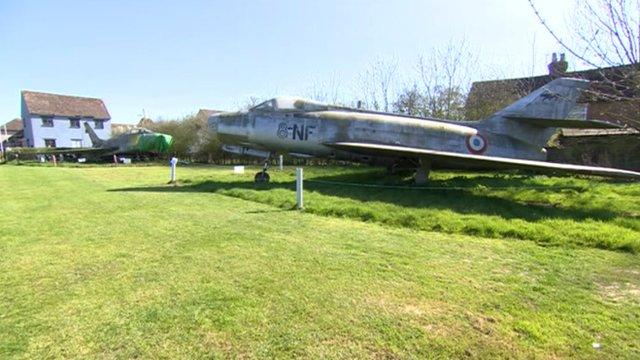
- Published28 February 2014
